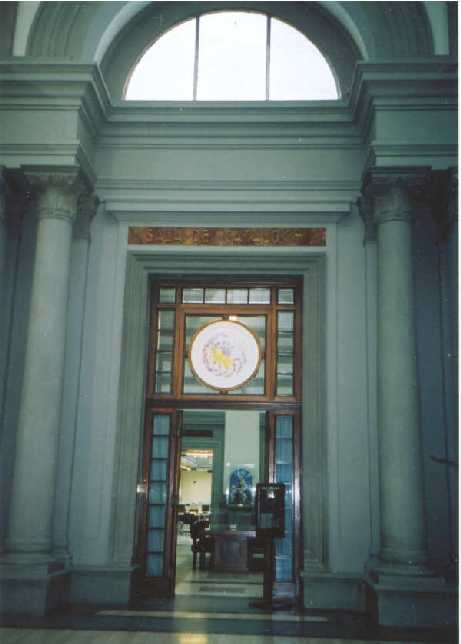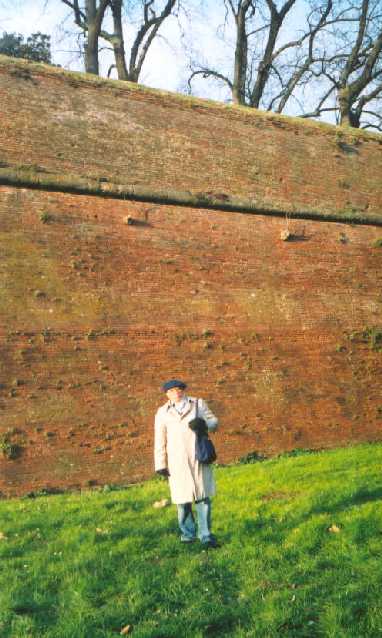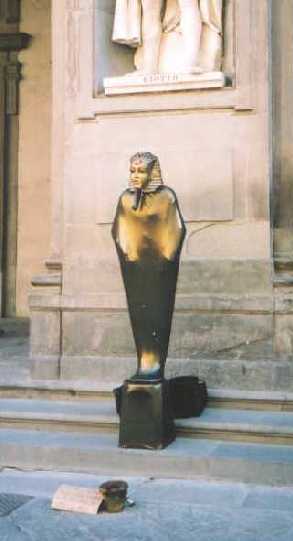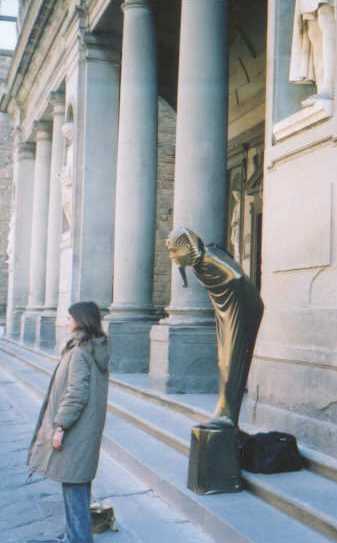Pictures from Tuscany, Italy, February 2003
Arlene G. Taylor and A. Wayne Benson
|
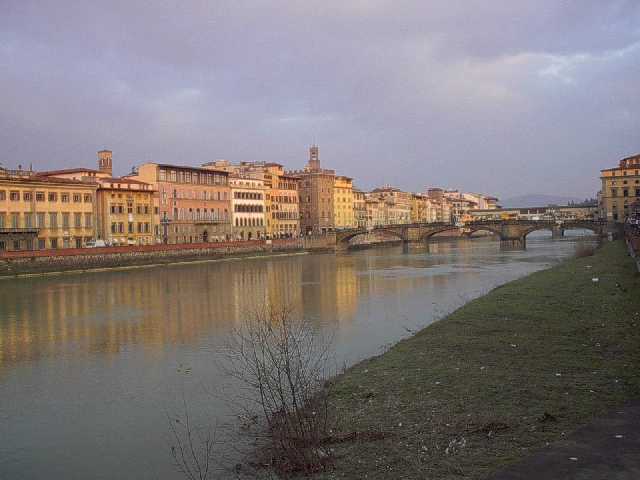 |
| Florence sits on both sides of the Arno River. Several bridges span the
river. All but one of the bridges were bombed out in WWII and were replaced
afterward. The first bridge in this picture is a "new" one, with
the one remaining old one beyond that. Most of the buildings along the river
are also post-WWII, although they were built like the ones that preceded
them. |
| |
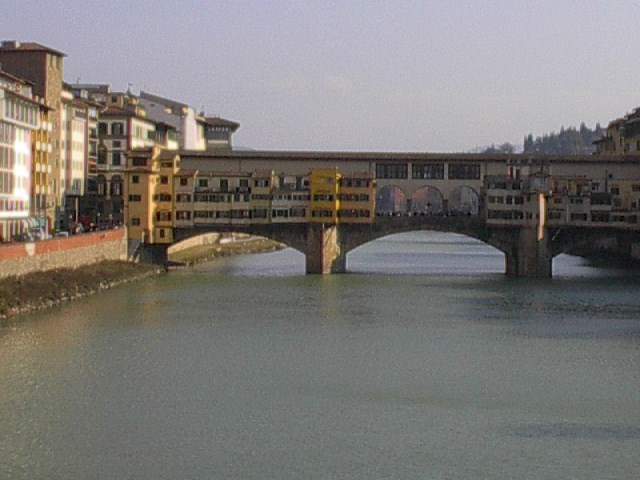 |
| This is the bridge that survived WWII- Ponte Vecchio. Many of the buildings
that line the bridge are from medieval times including a number of shops,
mostly jewlery stores now. Part of the structure houses a private "walk"
for the Medici family to get from the Palazzo Vecchio to the Palazzo Pitti. |
| |
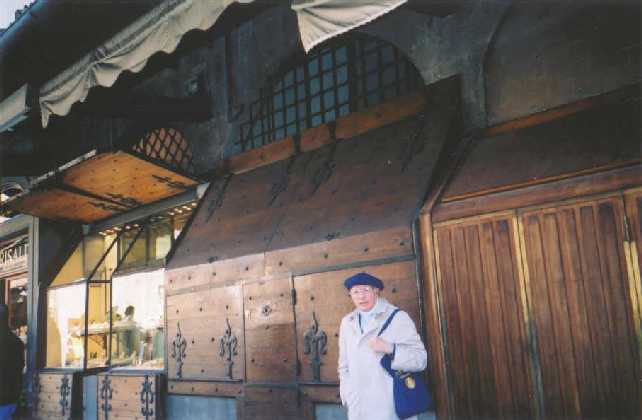 |
| A chilled tourist in front of some of the shops on the Ponte Vecchio.
The wooden "cover" is put down when the shop is closed. Surely
is more attractive than the roll-down garage door types in America! |
| |
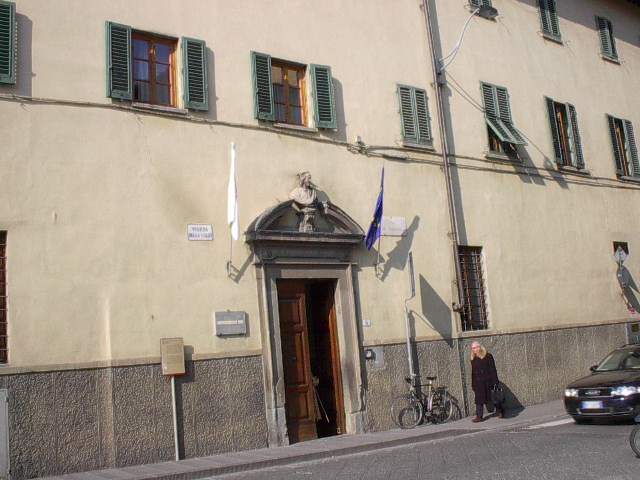 |
| Entrance to our hotel, Convitto della Calza. This was once a boarding
school run by priests who wore a sash that looked like a sock (calza), resulting
in the name. There are still priests living there (would see them at breakfast)
and there is a chapel to the left of the edge of the picture. |
| |
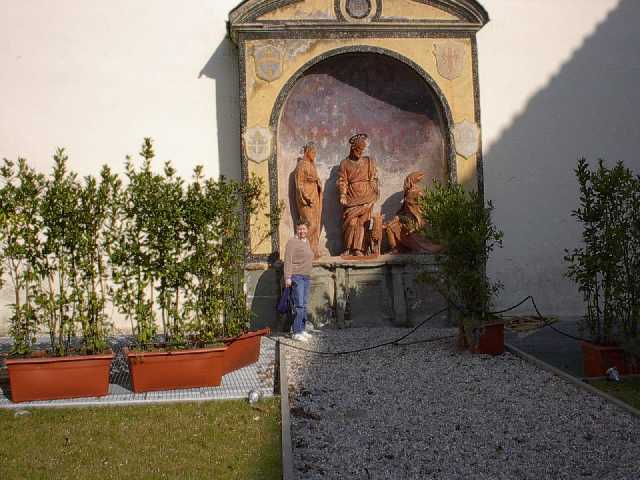 |
| The Convitto, like many buildings, is built around a courtyard. Arlene
is standing in front of a sculpture at one end of the courtyard. The sculpture
seemed to be the like a creche, sans the Christ child. |
| |
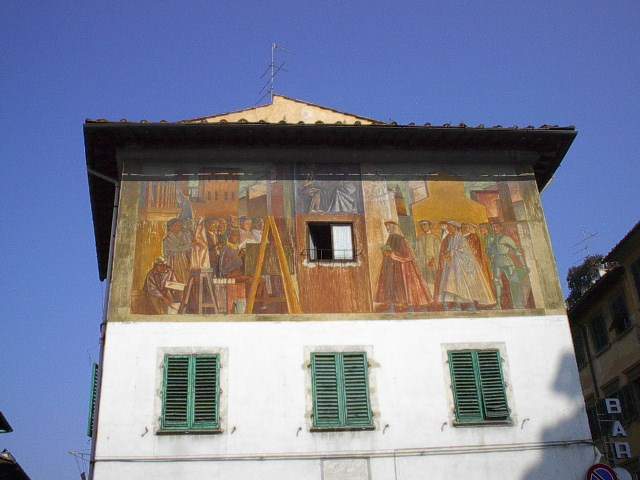 |
| On the street outside the hotel is this building and painting. Walking
around Florence is like walking in a large museum. Note the green shutters.
An abiding impression we came away with was of stucco buildings in various
shades of creme, yellow, and orange with green shutters and red tile roofs. |
| |
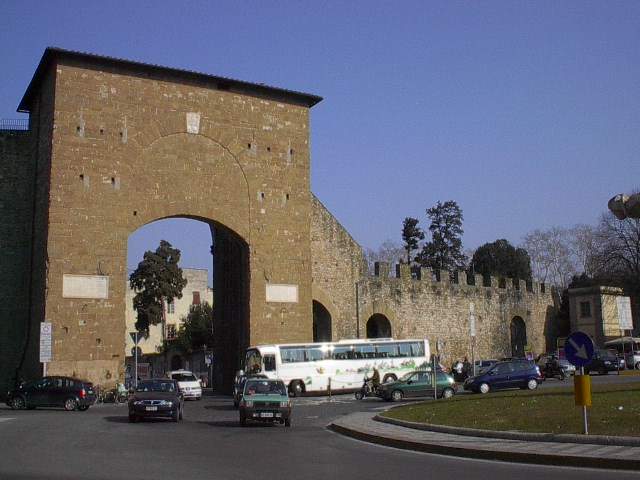 |
| Florence city gate with part of wall that once surrounded the city. Convitto
della Calza is just through the gate and to the left. We could see the wall
just outside our room window. |
| |
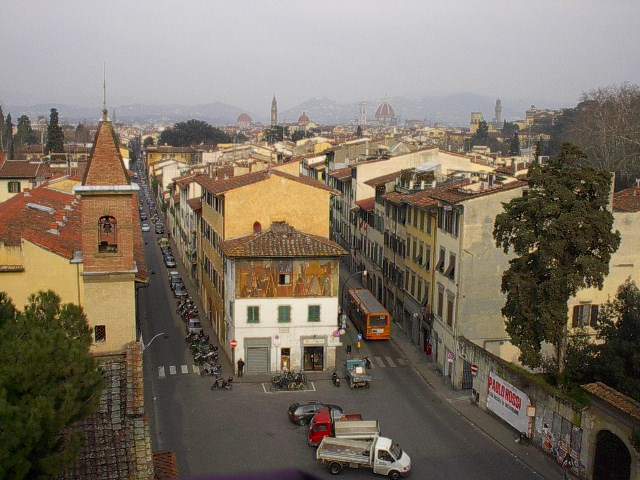 |
| View of Florence from atop the city wall. Convitto della Calza to the
left. Note the number of motor scooters parked along the street - a common
(and noisy) form of conveyance. |
| |
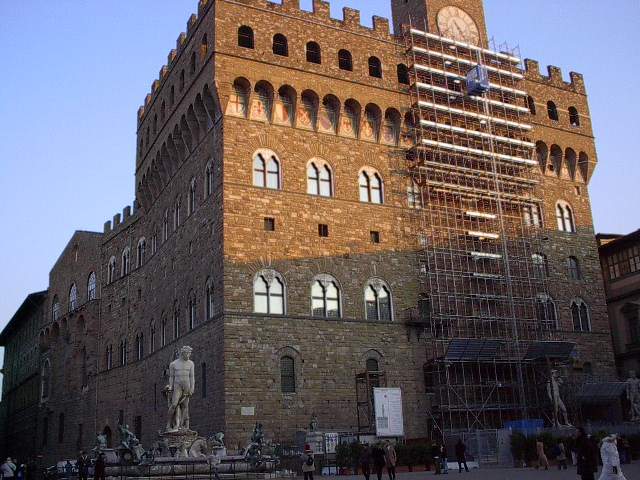 |
| Palazzos (formerly rich folks' houses) are all over. This is the Palazzo
Vecchio, former home of Cosimo I, the first of the Medici family. The piazza
in front of it is where Michelangelo's original sculpture of David stood.
The original is now in a museum, but a copy is where the original was (to
the right of the scaffolding in this picture). Conference speakers and guests
were treated to a tour of this Palazzo, followed by a banquet in one of
its halls. |
| |
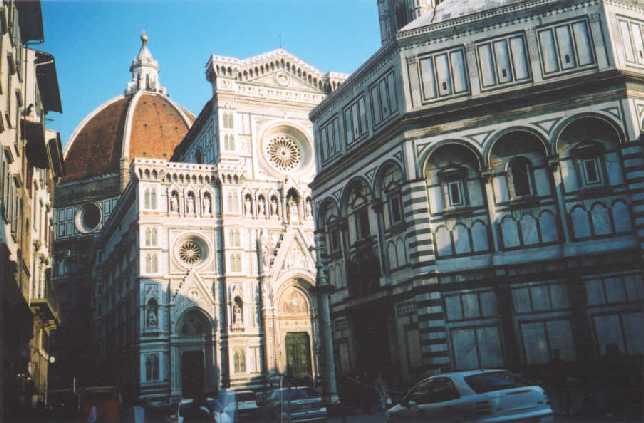 |
| This is the Duomo in Florence with the separate Baptistry in front of
it. Couldn't get a nice open picture as in Pisa (see below) - the city is
all built up around it. |
| |
 |
| The ceiling in the Baptistry at Florence, next to the Duomo. And you thought
it was just the Sistene Chapel with art on the ceiling! |
| |
|
|
| In case you can't make out the sign above the door, it reads: Sala Dei
Cataloghi (catalog room) - in the Biblioteca Nazionale Centrale Firenze.
(The occasion for the trip was Arlene's giving a paper at the International
Conference on Authority Control, and the speakers and guests were given
a tour of the Central Florence National Library.) |
| |
|
|
| The tower is still leaning in Pisa! Our picture was taken by one of a
young British couple who had flown to Pisa for the day to celebrate Valentine's
day. We took a picture of them in turn. |
| |
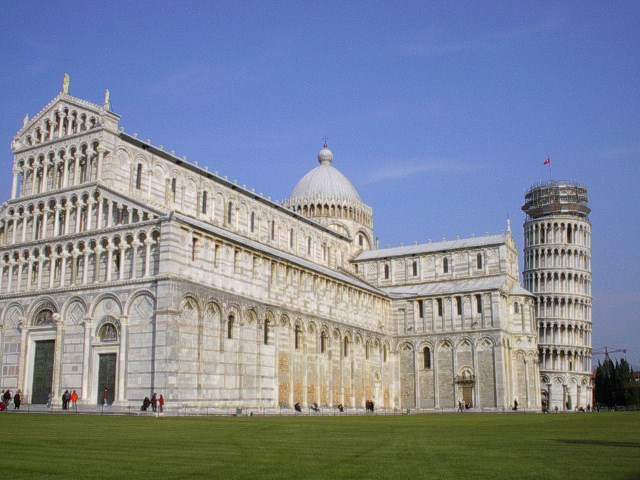 |
| The Duomo (Cathedral) of Pisa, with the leaning tower behind it. |
| |
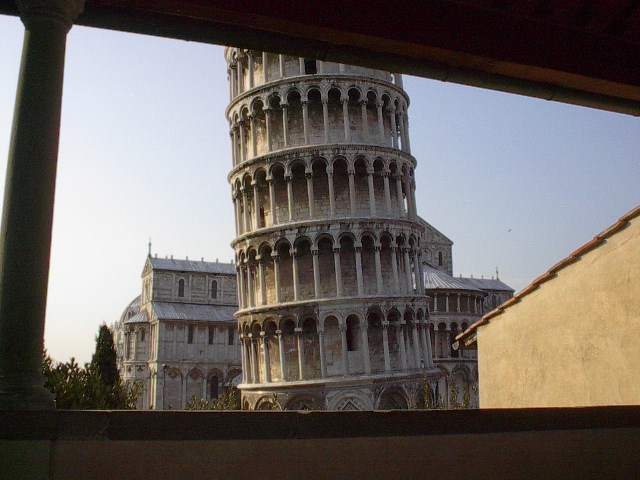 |
| Another view of the tower with the Duomo behind it, taken from the courtyard
of the former Chapter House (for monks) now housing a museum. The courtyard
was reminiscent of winter in the Central Valley of California with camellias
blooming and oranges on the trees. |
| |
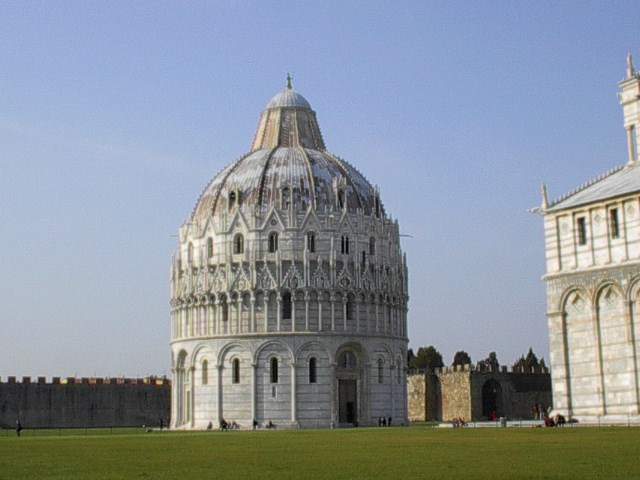 |
| The Baptistry at Pisa. There are stairs to a concourse where the upper
windows are. On that level there is a series of copper plates (and corresponding
prints from them) of scenes from the Book of Genesis, particularly the story
of Joseph. |
| |
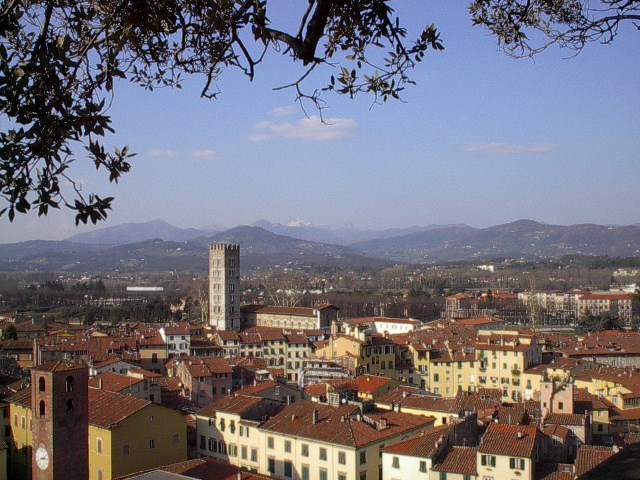 |
| This picture of ancient Lucca was not taken from a very tall tree!
The tree grows on the roof of the Guinigi Tower, whose steps we climbed
for the view. Note the snow on the mountain peaks in the distance. |
| |
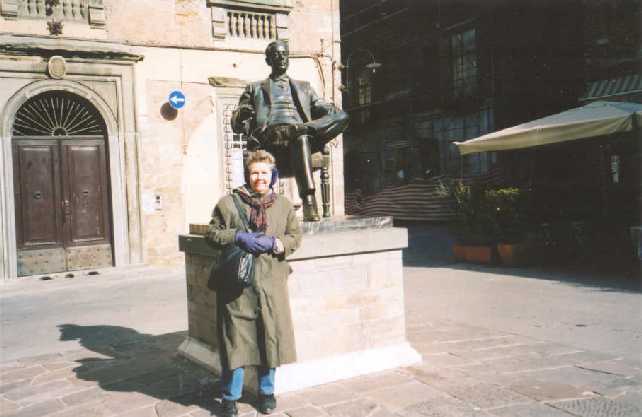 |
| Tourist by the statue of Giacomo Puccini in Lucca. His birthplace was
in the building to the back right (which was, unfortunately, closed for
refurbishing). As you know, his operas include La Boheme, Tosca, and Madama
Butterfly. |
| |
|
|
| The original town of Lucca was surrounded by a wall, which still stands.
In contrast to the wall in Florence, this is not only brick but a deep bank
behind it. On top of it is a promenade. We didn't, however - we were too
cold! |
| |
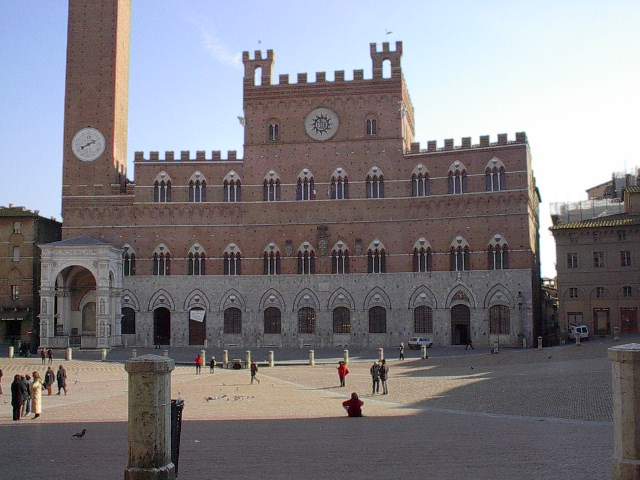 |
| The Palazzo Pubblico in Sienna, viewed across the Piazza del Campo. A
number of art works are inside, including an interesting one depicting good
and bad government. The bad government shows decrepit housing, a person
being robbed, and other problems in contrast to the bustling, building mode
and happy people of good government. |
| |
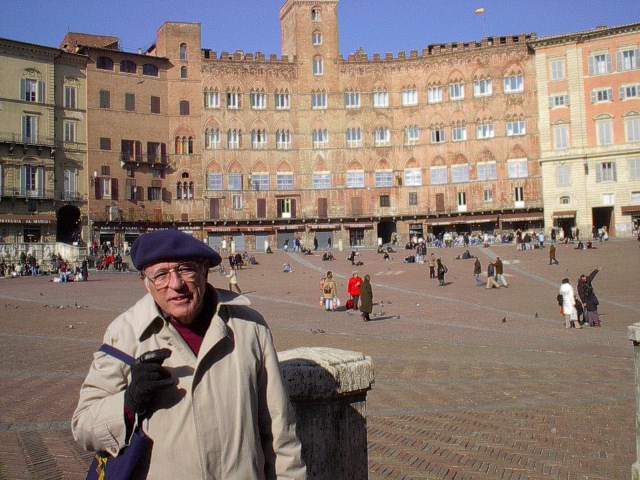 |
| Ah, Pierre! Como c'est va? Wayne with the fan-shaped Piazza del Campo
of Sienna in the background. We missed the big show here by six months.
Twice every summer (July 2nd and August 16th) the Palio takes place. People
crowd onto the Piazza and a horse race is run around the perimeter between
the Piazza proper and the buildings. Each horse is ridden bareback and represents
one of the contrade of the area (political division). (An aside:
Wayne's beret drew a torrent of French from a fellow seeking support for
the battle against AIDS. When Wayne said "Inglese?" he got it.
The fellow turned out to be a Brit!) |
| |
|
|
| The Duomo in Sienna with the domed roof of the baptistry peeking over
it. In Pisa and Florence, the baptistry was totally separate, in keeping
with the tradition in the early church, but here it is attached to the main
building. The church facade is made up of alternating stripes of white and
black marble. |
| |
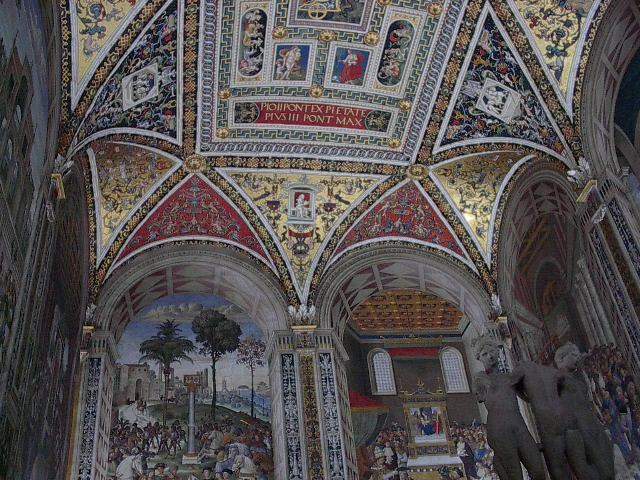 |
| The library of the Duomo in Sienna. Naturally we were attracted to the
library, but found little in the way of books (only some large choir books).
However the ceiling and walls were beautifully painted and well lighted! |
| |
|
|
| Ah, Florence! On the steps to the Uffizi, the largest collection of art
in Florence, even the beggars are artistic! Put money in the pot and the
"statue" takes a bow! |
| |
| |
